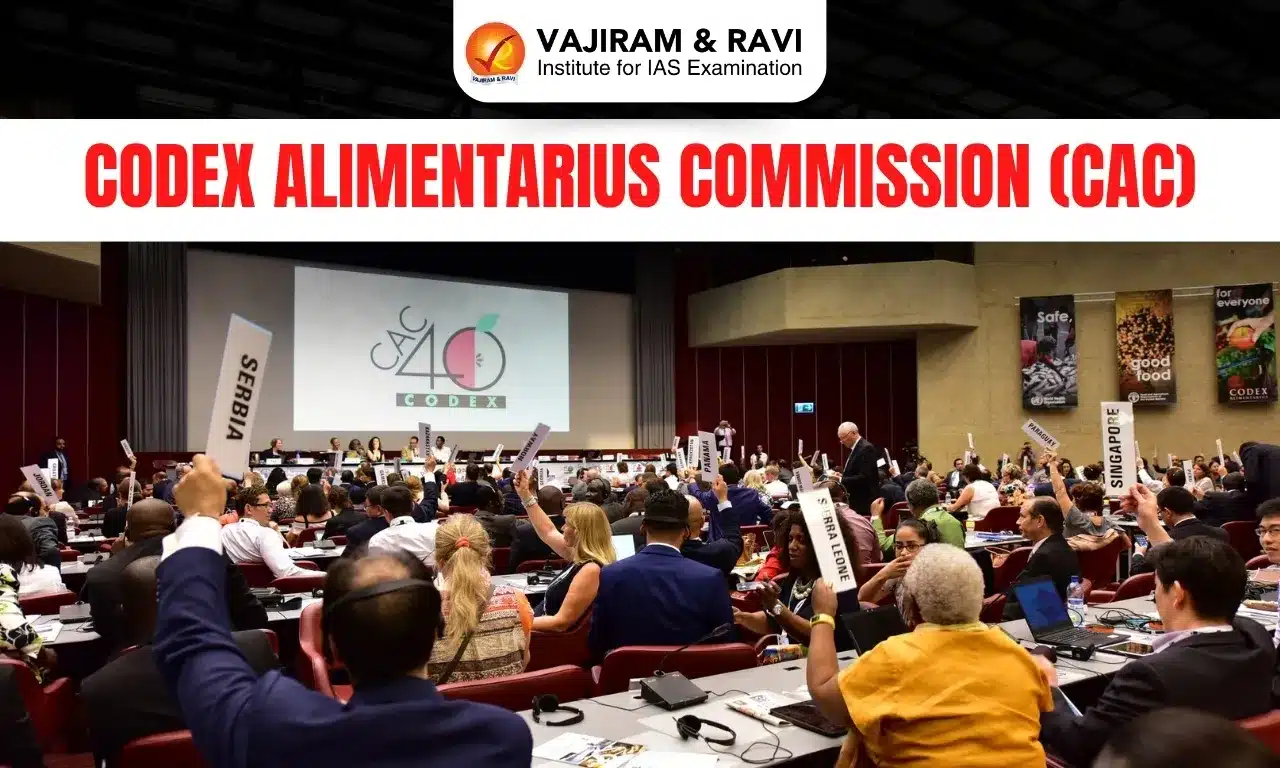Codex Alimentarius Commission Latest News
India’s role in global food standard development was appreciated in the 88th session of the Executive Committee of the Codex Alimentarius Commission (CCEXEC 88), held at the FAO Headquarters in Rome recently.
About Codex Alimentarius Commission
- It is the international food standards-setting body.
- It was established jointly by the Food and Agriculture Organization (FAO) and the World Health Organization (WHO) in May 1963.
- Objective: Protecting consumer’s health and ensuring fair practices in the food trade.
- It has its headquarters in Rome.
- Membership:
- Membership of the Commission is open to all Member Nations and Associate Members of FAO and WHO which are interested in international food standards.
- Currently the CAC has 189 Codex Members made up of 188 Member Countries and 1 Member Organization (The European Union).
- India became a member of CAC in 1964.
- The CAC consists of the following main organizational elements:
- Commission;
- Executive Committee;
- Codex Secretariat;
- Codex subsidiary bodies.
- The Commission meets in regular session once a year, alternating between Geneva and Rome.
- Funding: The programme of work of the Commission is funded through the regular budgets of WHO and FAO, with all work subject to approval of the two governing bodies of the parent organisations.
What is Codex Alimentarius?
- The Codex Alimentarius, or “Food Code”, is a collection of international standards, guidelines, and codes of practice to protect the health of consumers and ensure fair practices in the food trade.
- Codex standards are used worldwide to harmonize national food safety regulations and are recognized in the WTO Agreement on the Application of Sanitary and Phytosanitary (SPS) Measures as the international reference point for food safety.
- When food producers and traders comply with Codex standards, consumers can trust the safety and quality of the products they buy, and importers can have confidence that the food they ordered will meet the specifications.
- The standards are adopted by the Codex Alimentarius Commission.
Codex Alimentarius and India
- The National Codex Contact Point (NCCP) of India has been constituted by the Food Safety and Standards Authority of India (FSSAI) for keeping liaison with the Codex Alimentarius and to coordinate Codex activities in India.
- NCCP for India coordinates and promotes Codex activities in India in association with the National Codex Committee and facilitates India’s input to the work of Codex through an established consultation process.
Source: NOA
Last updated on December, 2025
→ Check out the latest UPSC Syllabus 2026 here.
→ Join Vajiram & Ravi’s Interview Guidance Programme for expert help to crack your final UPSC stage.
→ UPSC Mains Result 2025 is now out.
→ UPSC Notification 2026 is scheduled to be released on January 14, 2026.
→ UPSC Calendar 2026 is released on 15th May, 2025.
→ UPSC Prelims 2026 will be conducted on 24th May, 2026 & UPSC Mains 2026 will be conducted on 21st August 2026.
→ The UPSC Selection Process is of 3 stages-Prelims, Mains and Interview.
→ UPSC Result 2024 is released with latest UPSC Marksheet 2024. Check Now!
→ UPSC Toppers List 2024 is released now. Shakti Dubey is UPSC AIR 1 2024 Topper.
→ Also check Best IAS Coaching in Delhi
Codex Alimentarius Commission FAQ's
Q1. What is the primary function of the Codex Alimentarius Commission (CAC)?+
Q2. The Codex Alimentarius Commission (CAC) was established jointly by which two organizations?+
Q3. Where is the headquarters of the Codex Alimentarius Commission located?+
Q4. India became a member of the Codex Alimentarius Commission in which year?+
Tags: codex alimentarius commission prelims pointers upsc current affairs upsc prelims current affairs

















